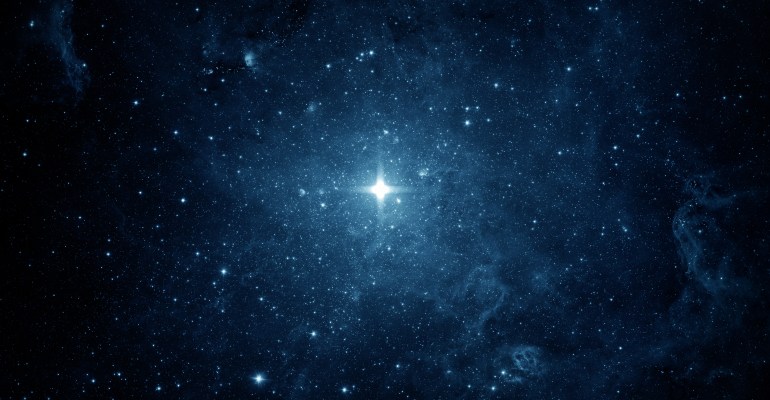I brought study What is new is that the universe knew only giant-sized stars at its beginning, and due to the complex physics of the universe at the time, this may have led to the formation of massive stars.
A new study concludes that the first stars in the universe were 10,000 times more massive than the Sun, and nearly a thousand times larger than the largest stars that exist today. Today, the largest stars reach only 100 solar masses.
According to the website “Universe Today” (Today is the universe) astronomers have questioned the size of the first stars for years, and some early estimates predicted these stars to be hundreds of times the mass of the Sun, while later simulations suggested they might be slightly larger. A natural dose, but according to a new study this isn’t true.
The researchers also found that these giant stars lived quickly and died very young. In general, the bigger the star, the shorter its life span, and once giant stars die, the conditions are not ideal for regeneration.
But why did it happen in the first place? Why are there no conditions in the universe for the rebirth of such giant stars?

Why don’t giant stars regenerate?
According to direct science (Direct scienceScientifically, after the Big Bang, 13 billion years ago, when there were no stars in the universe, the universe consisted only of a hot mixture of natural gas, almost entirely hydrogen and helium.
Hundreds of millions of years after that, during a period known as the Cosmic Dark Ages, this neutral gas began to accumulate increasingly into balls of dense matter.
Normally, these balls of dense matter quickly collapse and form stars in our modern universe, but this did not happen during the cosmic dark ages, and this is because the universe now contains something that was not present in the early universe, viz. Many elements are heavier than hydrogen and helium, while in the primitive era there was nothing but hydrogen and helium.
These heavier elements are very efficient at releasing energy, allowing dense clusters to contract very quickly and then collapse to densities high enough to trigger nuclear fusion, the process that powers stars by fusing lighter elements into heavier ones.
These heavy elements were not available in the early universe because the only way to obtain these elements in the first place was through the process of nuclear fusion.
According to the NASA website (NASA), when very massive stars collapse into their death orbits, the collapsing core heats up enough to support highly exotic nuclear reactions that consume helium and produce a variety of heavy elements, even iron.
It is this that leads to generations of star formation, mergers and deaths, enriching the universe to its present state and providing the heavy material that contributes to star formation thereafter. Therefore, the first generation of stars formed under very different and difficult conditions.

How do stars usually form?
Stars are born within dust clouds that are common in most galaxies, and an example of dust clouds is the Orion Nebula, and deep perturbations within these clouds lead to the formation of nodes of sufficient mass, which begin to collapse under the influence of gas and dust. Their gravity causes the nodes to take a spherical shape and the large ball of gas and dust is in a contraction as the temperature of the gas rises.
The gas usually consists of hydrogen and helium, which are light elements, and the temperature of the gas continues to rise due to compression, so the atoms become ions and free electrons at higher temperatures, and the state is called plasma.
The ball of plasma continues to contract under its own gravity, and its temperature rises until it’s high enough to start the reaction of ionized hydrogen to form helium. This interaction is called nuclear fusion, and it creates so much energy that the star begins to glow.
As for the first stars, they were not just ordinary fusion factories, they were giant masses of neutral gas that simultaneously ignited their fusion nuclei, avoiding the point where they would collapse into smaller pieces, resulting in massive stellar mass.
These first stars were very bright, yet they lived very short lives, less than a million years. Stars in the modern universe can live for billions of years, after which the giant stars die in supernova explosions.
To understand the mystery of these first stars, a team of astrophysicists turned to sophisticated computer simulations from the Dark Ages to understand what was happening back then.
The researchers found that a complex web of interactions existed before the first stars formed. Neutral gas, a gas with less and less reactivity with other substances, began to stick together, and the hydrogen and helium gave off little heat, allowing the clumps of neutral gas to slowly reach higher densities.
But denser clumps become very hot, producing radiation that separates the neutral gas from breaking up into many smaller clumps, meaning that stars formed from these clumps can become enormously massive.

“Professional coffee fan. Total beer nerd. Hardcore reader. Alcohol fanatic. Evil twitter buff. Friendly tv scholar.”
